Magnificent Microphotography: 50 Tiny Wonders
Snagged It!
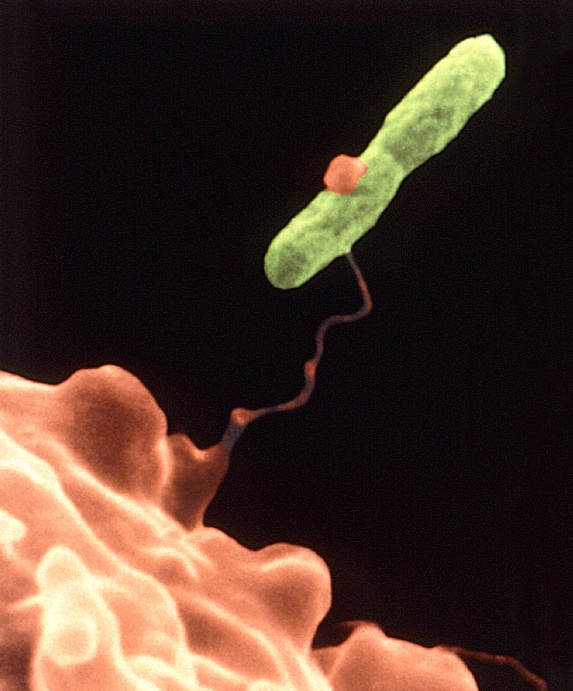
It's a trap! In this awesome microscopic image, an amoeba reaches out a spindly pseudopod to trap a Legionella pneumophila bacterium. This isn't curtains for the little green bacterium, though; once ingested, L. pneumophila can live inside the amoeba (Hartmannella vermiformis, for those keeping track at home). In fact, getting engulfed by an amoeba can be the best thing to happen to one of these bacterium, given that the new host then protects it from environmental stresses. L. pneumophila is the agent that causes Legionnaires' disease, a respiratory illness that can sometimes be fatal.
Guess What?
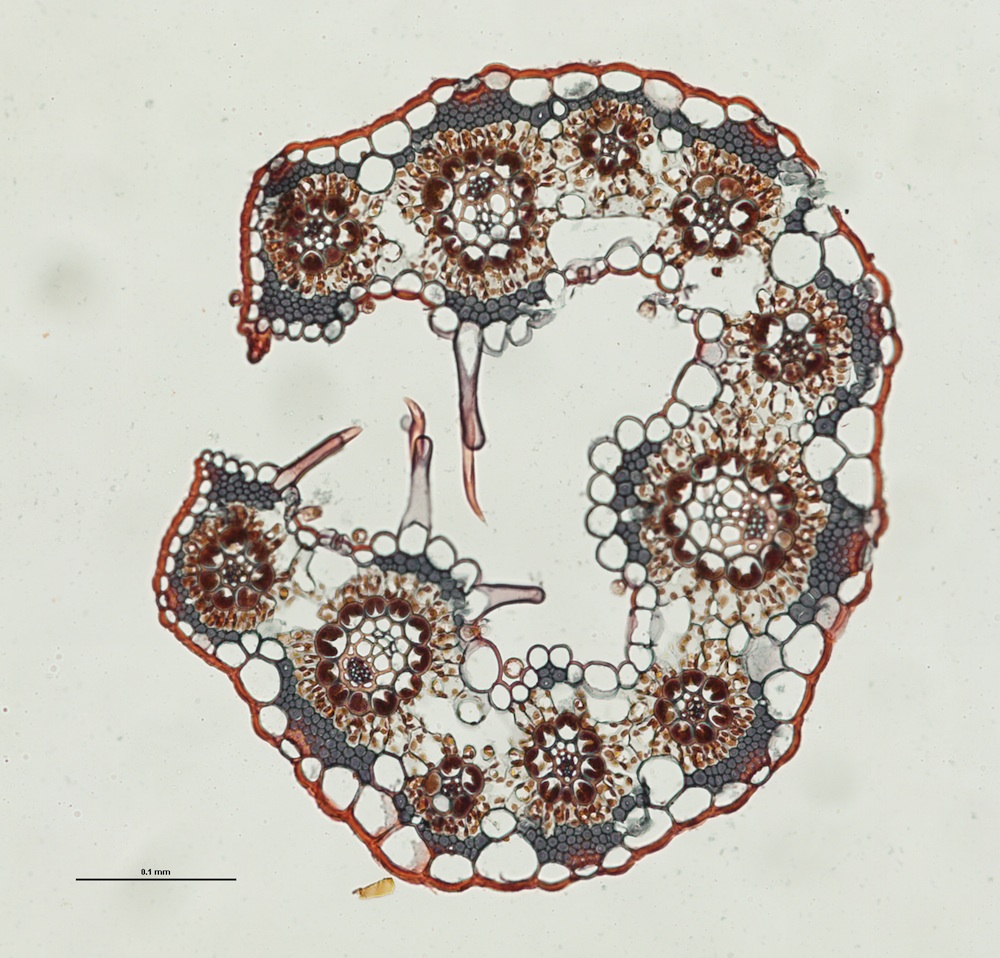
What do you see in this finely detailed image? A monster with teeth bared? A scrape of delicate lace? In reality, you're looking at a cross-section of a leaf of grass. This particular segment comes from a real tough cookie called Eriachne ciliata, which is found in Australia and can make its home in gravelly or stony soil. Researchers from Brown University in Rhode Island examined the anatomy of this and other grasses to better understand how some plants evolved to survive in tough climates. They reported their findings the week of Dec. 24 in the journal Proceedings of the National Academy of Sciences.
What Is This?
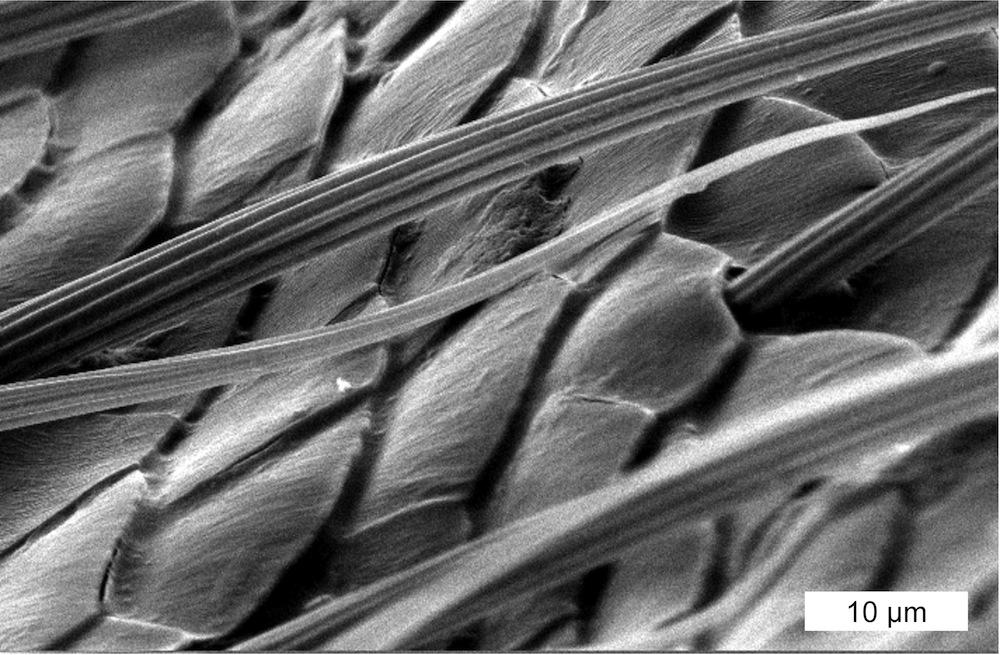
Can you guess what this image is?
As the 10 nanometer scale bar gives away, you're looking at the very small. These are the scales covering the abdomen of a firefly. As it turns out, the jagged shape of the scales actually enhances the fireflies' glow, researchers report Jan. 8, 2013 in the journal Optics Express. [Top 10 Things to See With Your First Microscope]
The scientists used the example of the fireflies (genus Photuris) to design a new overlayer for LED lights that likewise brightens up the bulbs' output, making them 1.5 times more efficient than the originals.
Biomineral Single Crystals
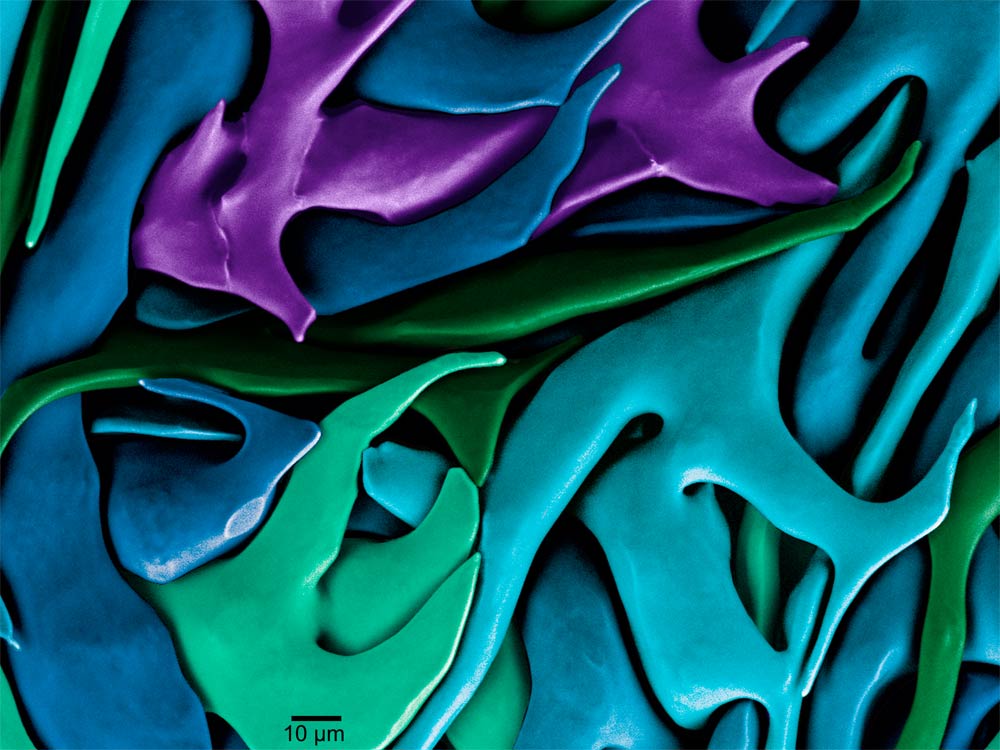
Biomineral crystals found in a sea urchin tooth. Geologic or synthetic mineral crystals usually have flat faces and sharp edges, whereas biomineral crystals can have strikingly uncommon forms that have evolved to enhance function. The image here was captured using environmental scanning electron microscopy and false-colored. Each color highlights a continuous singlecrystal of calcite (CaCO3) made by the sea urchin Arbacia punctulata, at the forming end of one of its teeth. Together, these biomineral crystals fill space, harden the tooth, and toughen it enough to grind rock.
Mighty Mitochondria
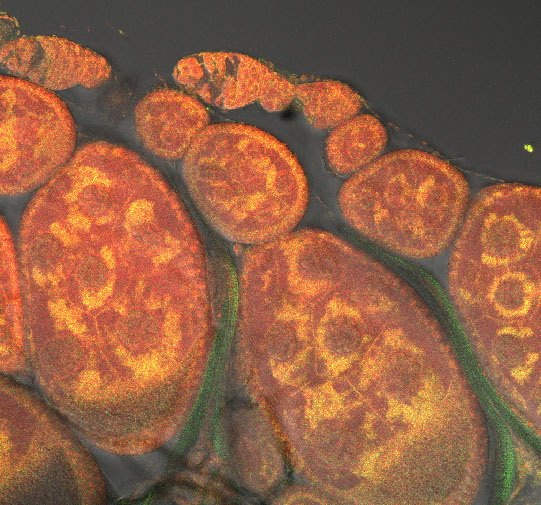
Your cells need energy to function, and providing that energy is the job of mitochondria, seen here stained dark orange in fruit fly ovary cells. These small but serious structures convert energy from food into forms that the cell can use. Mitochondria also contain their own DNA, passed down from mother to child. Researchers are now learning that mismatches between mitochondrial DNA and the DNA found in a cell's nucleus can cause disease. Reporting Jan. 31 in PLOS Genetics, Brown University researchers found that when the two genomes clash, enzymes that require both mitochondrial and nuclear DNA for production work less efficiently, resulting in sluggish flies. The findings are a first step in understanding similar disease in humans, the researchers said.
Lil' Spiky
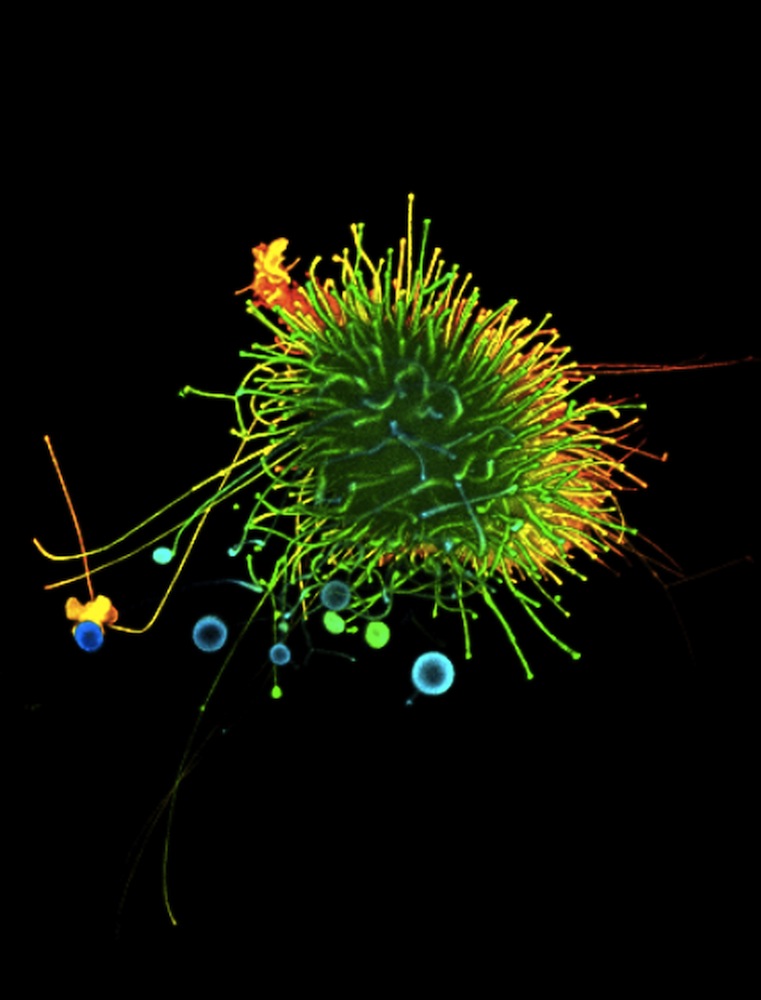
This strange specimen is an ordinary cell, transformed by scientists into a cancer-promoting monster. Using gene transfer, researcher from the University of Eastern Finland coaxed this cell into producing large quantities of a carbohydrate compound called hyaluronan. The spiky protuberances that make this cell look like a Koosh ball are actually hyaluronan factories.
Hyaluronan is part of the body's chemical toolbelt for healing, but it can also promote inflammation and cancer. New research published in the Journal of Biological Chemistry finds that high sugar concentrations in the blood promote the production of hyaluronan, which may explain why diabetics have an elevated risk of breast cancer. Researchers hope that slowing hyaluronan production could slow the spread of cancerous cells.
So Smooth
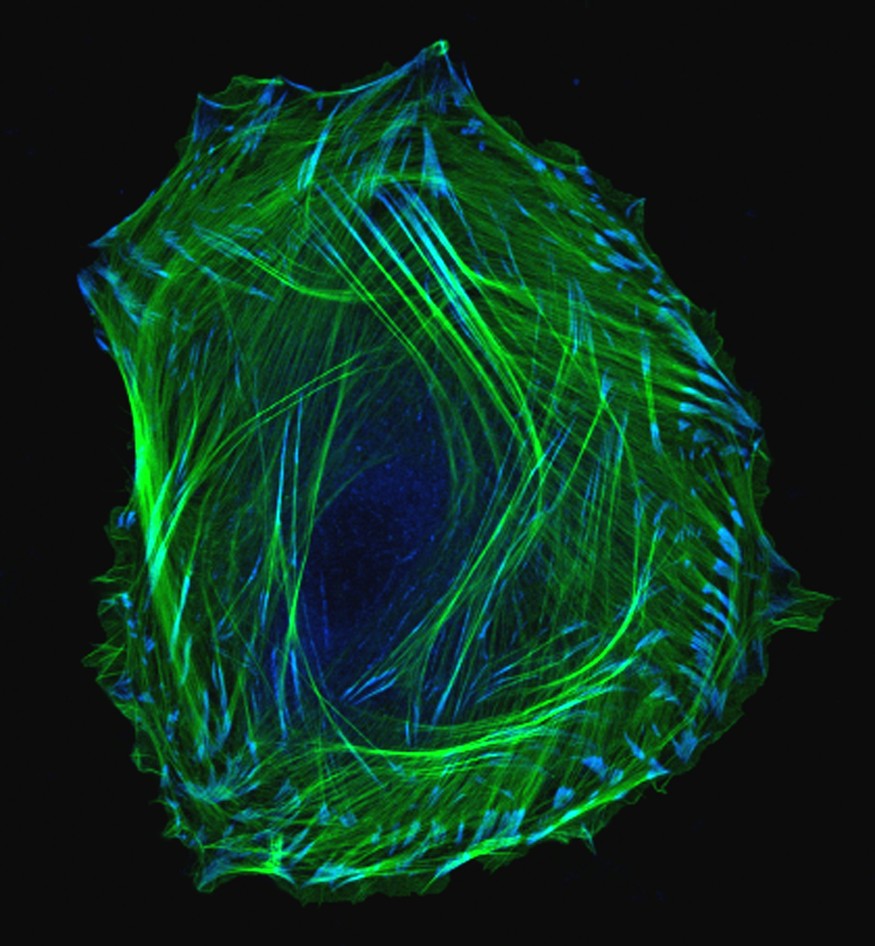
This shot may look like a far-off alien galaxy, but it's quite close to home. Using fluorescent dyes and a laser-scanning confocal microscope, researchers captured this image of an embryonic smooth muscle cell. Smooth muscle is the muscle not under voluntary control, such as the muscle lining the gut. Here, the structural underpinning, or cytoskeleton, of the cell glows in green.
Sign up for the Live Science daily newsletter now
Get the world’s most fascinating discoveries delivered straight to your inbox.
Spiking Out to Settle Down
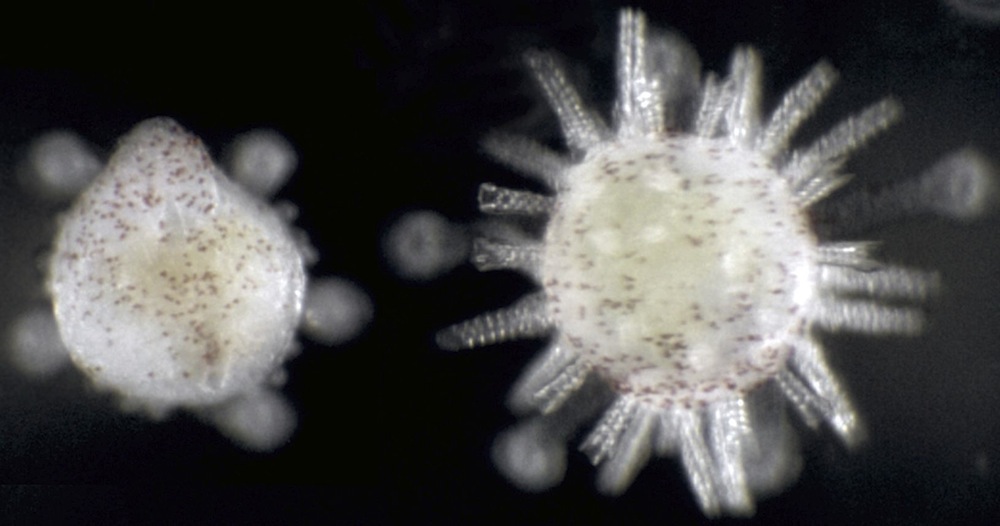
Sea urchin larvae begin their transformation into adulthood by sprouting spikes. These microscopic larvae ply the tides for about a month before settling down on rocky shorelines. New research published April 8, 2013 in the journal Proceedings of the National Academy of Sciences finds that high turbulence near rocky reefs gives larvae a clue to start searching for a grown-up home. The turbulence signals keeps larvae from wasting their time looking for rocks on sandy beaches.
What in the World?
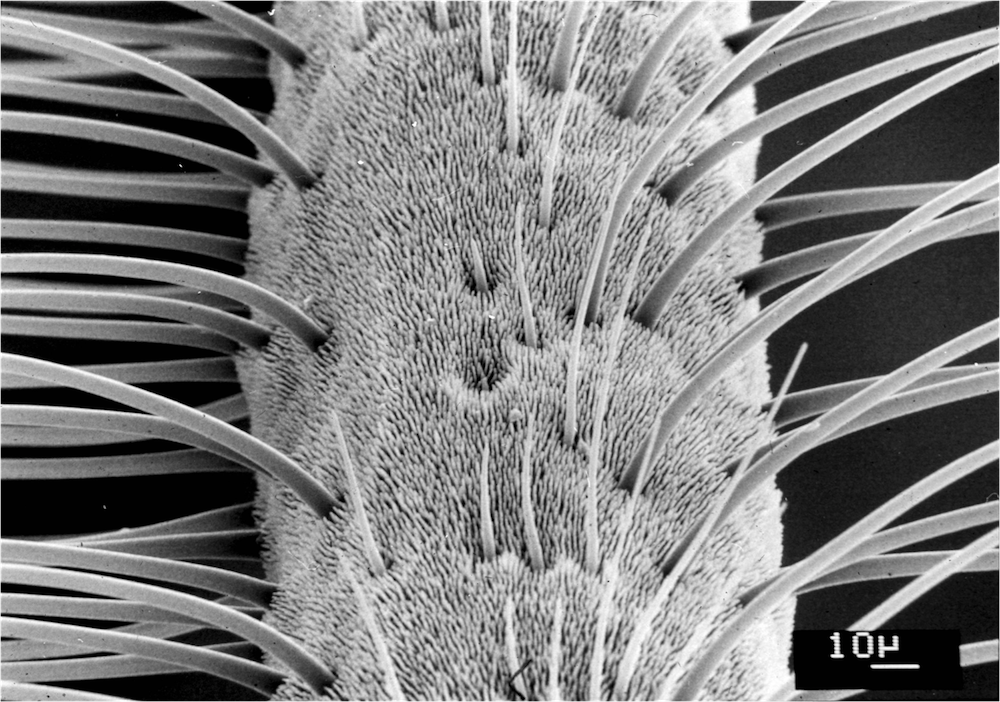
Here's a hump day guessing game for the visually inclined: What is this odd black-and-white object? Helpful hint: It acts something like your nose.
Are all the guesses in? This is an ultra-close look at a moth antenna. Male moths use their antennae to detect pheromones from females, which travel through the air in plumes (look out, your porch light may be surrounded). A new study published April 15, 2013 in the journal Proceedings of the National Academy of Sciences found that male moths aren't perfect at sniffing out the chemicals in these plumes, so they sometimes mate with strains of moths they wouldn't otherwise approach. The finding explains the number of hybrid moths in nature.

Stephanie Pappas is a contributing writer for Live Science, covering topics ranging from geoscience to archaeology to the human brain and behavior. She was previously a senior writer for Live Science but is now a freelancer based in Denver, Colorado, and regularly contributes to Scientific American and The Monitor, the monthly magazine of the American Psychological Association. Stephanie received a bachelor's degree in psychology from the University of South Carolina and a graduate certificate in science communication from the University of California, Santa Cruz.










